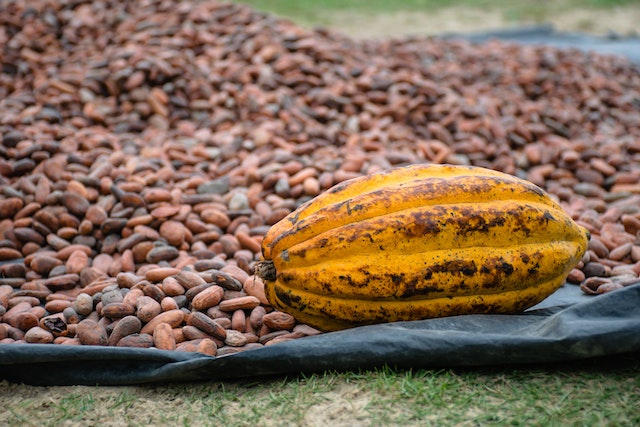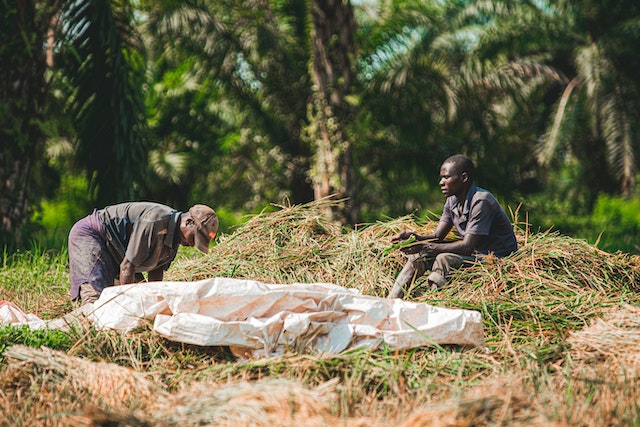
Sustainable Cocoa: Why Lab-Grown Chocolate is Not the Solution
March 10, 2023
How Do You Know if Chocolate is Vegan? Guide to Vegan Chocolates
April 7, 2023Bantu Peoples Migration
The Agricultural and Economic Effects
The Bantu expansion is perhaps one of the biggest migrations in human history. While the Bantu are today mostly known for their closely related ethnic languages, the effects of Bantu expansion go beyond just the spread of spinoffs of a root language.
The expansion is credited with the spread of agriculture in Sub-Sahara Africa, along with other economic effects that go with displacing or assimilating autochthonous populations along migratory routes.
Who are the Bantu?

The Bantu peoples migration spread agriculture across Sub-Sahara Africa
Bantu is the name coined by German linguist Wilhelm Bleek for a group of distinct tribes that speak closely related languages across Central Africa, Southeast Africa, and Southern Africa.
According to linguistics and archeological evidence, the common ancestral homeland of the Bantu is believed to be a border region between Cameroon and Nigeria in West-Central Africa, where the original Bantu spoke the root language of Proto-Bantu.
Experts believe the Bantu migrated from this area to other parts of Africa, taking along with them their pottery-making, agricultural skills, early iron age technology, and language.
There are an estimated 440-680 Bantu languages today, and the highest concentration (over 60 million) of Bantu speakers are in the Democratic Republic of the Congo. The total Bantu population today is estimated at around 350 million spread across almost all of Sub-Saharan Africa.
Below are countries home to Bantu peoples with their respective Bantu population among the general population. Each country has scores of different Bantu tribes with their unique languages.
| Angola, 97% | Burundi, 85% | Cameroon, 30% | Comoros, 99% |
| Congo, 97% | Democratic Republic of the Congo, 80% | Equatorial Guinea, 95% | Eswatini, 99% |
| Gabon, 95% | Kenya, 60% | Lesotho, 99% | Malawi, 99% |
| Mozambique, 99% | Namibia, 70% | Rwanda, 85% | Somalia, 4% |
| South Africa, 75% | Tanzania, 95% | Uganda, 80% | Zambia, 99% |
| Zimbabwe, 99% | Botswana, 90% |
Causes of Bantu Migration
Historians hypothesise that the Bantu expansion had several causes, including population expansion, search for fertile farmland and grazing land, famine, epidemics, intertribal rivalries, and the influence of colonisation.
The Bantu migration has been the subject of much study and debate without a consensus yet on the exact reason(s) for the wide spread of Bantu across so much of Sub-Saharan Africa.
Effects of Bantu Migration on Agriculture
The Bantu are believed to have been farmers and cattle herders with more advanced farming tools than other groups. Along their millennium-long migration from West-Central Africa to East and South Africa, the Bantu improved on and adjusted their agricultural economies while sharing their farming technology with other groups.
Depending on the suitability of environmental conditions for farming or animal rearing, the Bantu might have practised three types of agricultural economies.
A pure agricultural economy was common with the Bantu in Central Africa, where diseases and the tropical rainforests didn’t favour animal rearing. With iron hoes and wooden sticks and forks, the Bantu cultivated yam and banana in the rain forest areas and sorghum and millet in the grassland regions.
Forward and backward migration was possible, apparently explaining how millet and sorghum cultivation was introduced into Central Africa by the Bantu from East Africa. Maize and cassava were introduced later.
It was in Central Africa that the Bantu learned to hunt and fish from the hunter-gatherer pygmy population. They also introduced iron tools to the pygmies who were still in the stone-age.
Decline in soil fertility would usually cause the Bantu to move, thus spreading their agricultural practices wherever they went.
Unlike the tropical rainforests infested with tsetse fly, the plateau region of East Africa was drier, favouring animal husbandry. Here, the Bantu adopted millet, sorghum, and other crop cultivation from the Cushites and Nilotes, leading to a mixed agricultural economy.
The Bantu practiced a pure animal husbandry economy in parts of East Africa and Southern Africa plagued by droughts and barren soils unsuitable for planting. The Khoisan population, native to Southern Africa, were hunter-gatherers who learned animal husbandry from the Bantu.
The agricultural effect of the Bantu migration was two-fold. One, the spread of advanced farming tools such as iron hoes, which made the cultivation of virgin land possible and easier.
Two, the introduction and promotion of crops and livestock in new lands. Crops grown by the Bantu during migration included yams, banana, and plantains. These, they spread to new lands as they also assimilated the crops of these new lands into their diet.
Other Effects of Bantu Migration
Besides spreading their farming techniques and iron tools, the Bantu are also credited with the spread of pottery-making techniques and smithing technology.
The Bantu migration either displaced or assimilated indigenous populations. Advanced in weaponry, the Bantu could easily impose themselves on their new lands. Some groups, like the Pygmies and the San, rejected Bantu leadership, thereby retreating to the rainforests of Central Africa and the Kalahari Desert in East Africa, respectively. Groups that didn’t resist the Bantu were assimilated and adopted Bantu farming techniques and languages.
Another effect of the Bantu expansion is the creation of regional societies. As their population increased and the Bantu settled, this led to the formation of kingship. Today, the Bantu are a grouping of hundreds of ethnic groups with recognised ethnic authorities, usually around their traditional way of life.
Perhaps, the most prominent legacy of the Bantu migration would be the spread of the hundreds of Bantu languages spoken across 24 African countries. Over 300 million people today identify as Bantu speakers with ethnic languages that are closely related yet distinct enough to be classified as different offshoots of the same mother language known as Proto-Bantu.
Bantu Chocolate
Faithful to the ancient Bantu farming spirit, at Bantu Chocolate we are African farmers and Bantu speakers from Cameroon. We farm ethical cocoa in the tropics of Central Africa and make chocolate bars in the United Kingdom.
Through regenerative agriculture, we produce cacao and transform the dried beans into bean-to-bar chocolate products that help us pay a living wage to our farm workers and empower our community without harming the environment.
We also make cacao pulp juice Kombucha in a sustainability drive that helps us create more income for our farm while reducing the wastage rampant in the cocoa industry.
Recap
The effects of the Bantu migration across Sub-Sahara Africa include:
The spread of advanced farming technologies such as iron hoes.
The introduction and promotion of crops and livestock in new lands. Those crops included yams, banana, and plantains.
The spread of pottery-making and smithing technologies.
The spread of Bantu languages.
References
The Impact of Bantu Migration on Agriculture in Sub-Saharan Africa
The Spread of Farming in Sub-Saharan Africa
World History.Org, Bantu Migration
https://en.wikipedia.org/wiki/Bantu_languages
https://en.wikipedia.org/wiki/Bantu_peoples
https://www.ncbi.nlm.nih.gov/pmc/articles/PMC8117461/
https://www.rcboe.org/cms/lib/GA01903614/Centricity/Domain/1872/bantu_migration_-_pp.pdf
.
Chocolate Extinction: Fact vs. Fiction + What Chocolate Lovers Can Do
Chocolate ExtinctionFact vs. Fiction, What Consumers Can Do Share On Facebook Twitter Email Is the world really running out of chocolate? Not really. Currently the global […]
Corporate Chocolate Gifting Ideas to Appreciate Employees and Delight Clients
Corporate Chocolate GiftingHow to Appreciate Employees & Delight Clients Share On Facebook Twitter Email When it comes to corporate gifting, a one-gift-fits-all approach just doesn't cut […]
Cacao Supper Club at Home: Guide to Tasting Chocolate, Cacao Tea, and Pulp Juice
Cacao Supper Club at HomeGuide to Tasting Chocolate, Cacao Tea, and Pulp Juice Share On Facebook Twitter Email Imagine gathering around the table with a few […]






